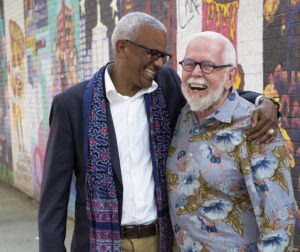Preparing for the ‘silver tsunami’ across the globe
We’ve all heard or seen the statistic—in the United States, more than 10,000 baby boomers will be turning 65 every day for the next 20 years, resulting in a “silver tsunami” that will affect everything from television advertising to senior living design. But what about outside the United States? Is the silver tsunami landing on other shores?
Historically, the elderly have comprised about three to four percent of the total population. Today, that figure is about 15 percent in the developed world, according to a recent global aging report from the World Economic Forum. By 2050, that number is projected to rise to 25 percent with some countries, like Germany, Italy, Japan and South Korea reaching an astounding 35–40 percent. Over the next 40 years, the global population over 60 years old will more than double, from 760 million to a staggering two billion people. And, for the first time ever, the number of individuals over 60 years of age will outnumber those under 15 years old. In that same time period, the number of individuals over 80 years old will go from 110 million (1.6 percent of the total population) to 400 million (four percent of the total population).
As you can imagine, the cost of aging also is rising globally. By 2040, here’s what the benefits for the elderly will cost as a percentage of gross domestic product (the top five countries):
- Spain: 26.1 percent
- Italy: 24.7 percent
- France: 23.5 percent
- Netherlands: 23.2 percent
- Germany: 21.7 percent
(By comparison, the United States will be at 16.3 percent.)
Countries have responded by implementing changes to help address the economic impact of aging. For example, France, Greece, Ireland and the England are in the process of raising the legal age for retirement. Another example is the current effort in the U.S. to enact healthcare reform. These and other efforts remain critical given the diminishing number of productive workers with respect to the number of elderly. In 1950, there were 12 workers per elderly person; today there are nine workers for every elderly person. By 2050, that ratio will drop dramatically to four workers per elderly person.
By most measures, the silver tsunami is not only landing on other shores, it’s crashing on them. In countries like Japan and Germany, senior living services are well established already, but as these and other countries continue to experience accelerated rates of aging, the strain on services will increase.
All of this statistical data points to a growing need for senior living services. However, we also see, read and hear the call for aging in place and more specifically, aging at home. Home healthcare, home care services and the PACE (Program of All-Inclusive Care for the Elderly) program are examples of services which meet the need that baby boomers have expressed to allow them to age at home. The desire to age in place is a universal one that traverses all cultural and geographic boundaries.
But we also know that despite our increased life expectancy, we can expect that our senior population will need senior living services, including assisted living and skilled nursing services. As an industry, we have seen a steady increase in the frailty and acuity of the population we serve and this will certainly continue as the global population increases in life expectancy. (As of 1950, the global life expectancy was 48 years; in 2050, it is projected to be 75 years.)
As countries are grappling with aging, including their numbers and their costs, foreign attention is turning to the well-developed senior living industry in the United States. As such, I would expect that there will be increasing strategic opportunities for providers to establish an international presence if they so desire.
All of us who have been in healthcare for any period of time are aware that these prospects have existed before, and providers have had varying levels of success in these ventures. Issues such as language, culture and social attitudes vary by country and present challenges for the LTC provider. In addition, significant concerns still remain over the economic funding of senior living services. However, the developing combination of declining birth rates and rising life expectancy will help to create a great opportunity for senior living services for many years to come.

Craig T. Fukushima, NHA, is partner at The Fox Group, a consulting practice that serves a wide range of acute and post-acute healthcare providers. He has worked in the LTC industry for more than 30 years, starting as a skilled nursing facility administrator and later as operations vice president. He hosts a Twitter discussion (second Tuesday of every month at noon EST) on issues related to Alzheimer’s disease at #talkalz.
Related Articles
Topics: Accountable Care Organizations (ACOs) , Advocacy , Executive Leadership , Medicare/Medicaid , Regulatory Compliance









